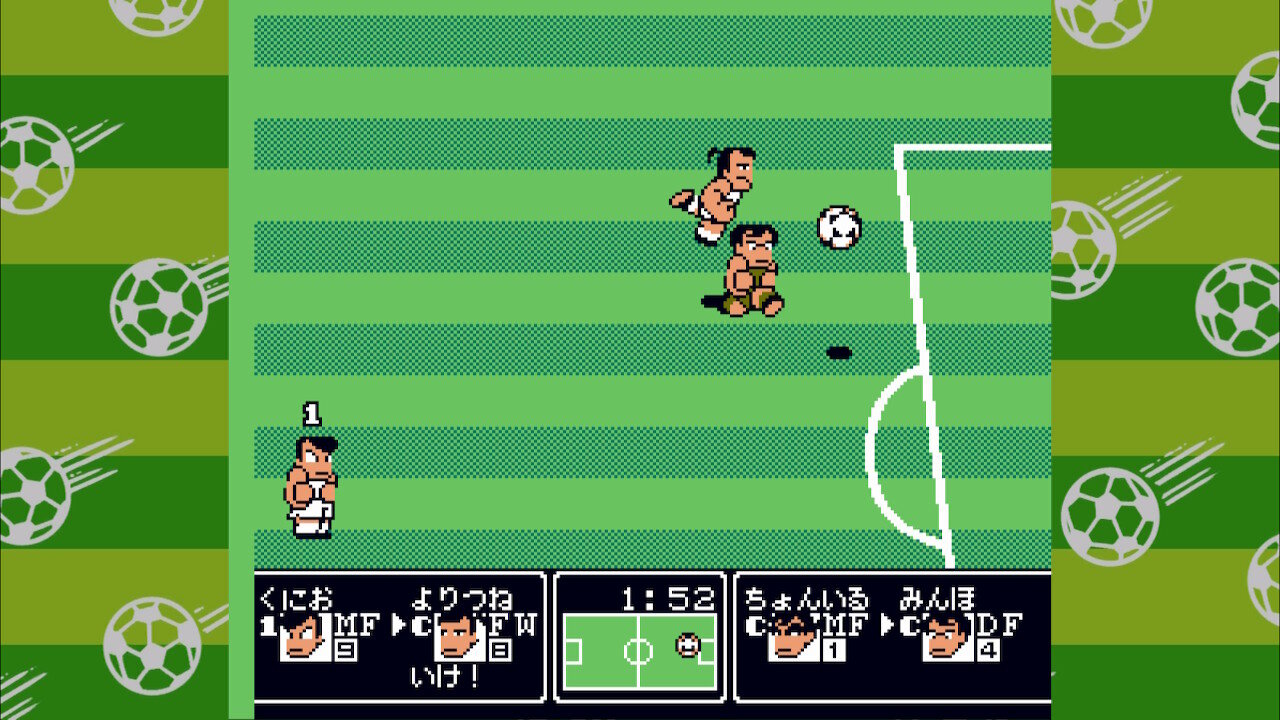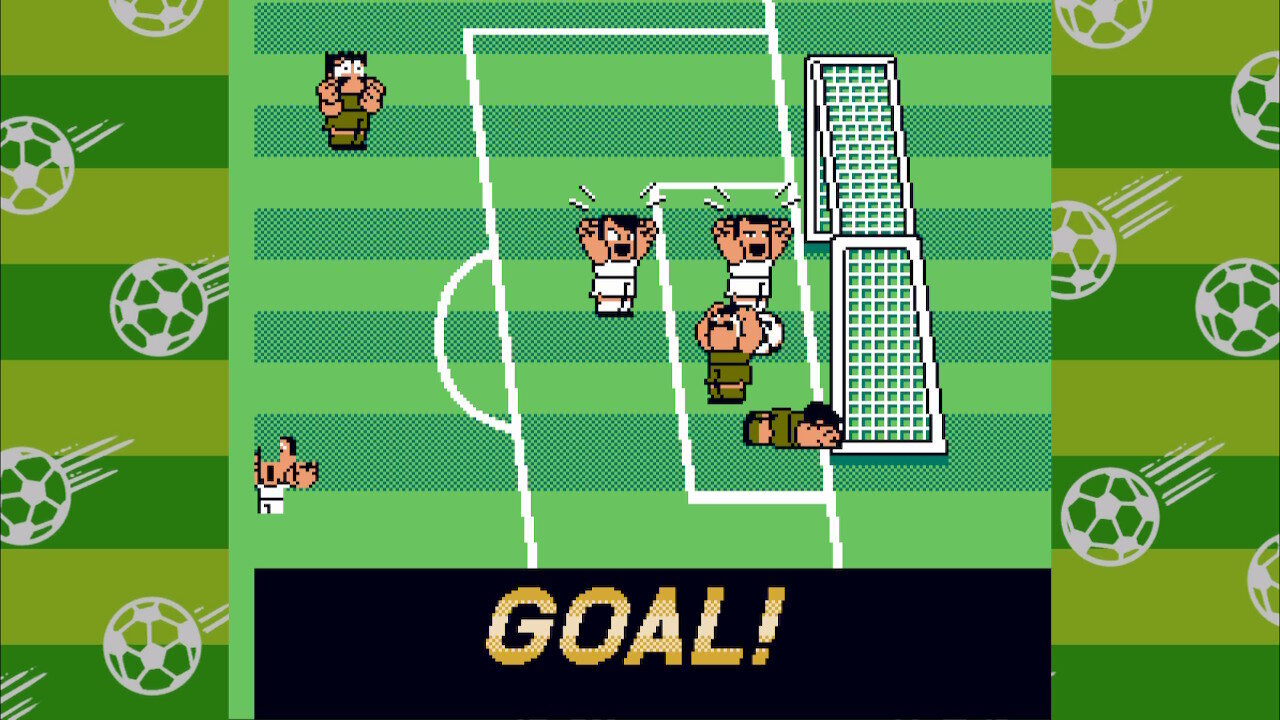Kunio-kun: The World Classics Collection review
While I was in Japan last summer, I decided to go shopping for games. I was mostly looking for old games never released in the West and decided to buy Kunio-kun: The World Classics Collection on Nintendo Switch. The cart is collection of 8-bit games, many of which unsurprisingly were never released in the West.
Of everything I picked up on that trip, this title gave the most buyer’s remorse. This was mostly because I’d bought a new copy at Bic Camera for nearly $60, and since everything in the collection was from the NES era, that price tag was awfully steep. At least—I told myself—I could justify the expense as the only way to play the collection, since the was only available in Japan. Except then it ended up being translated for a digital release in the West as the “Double Dragon & Kunio-kun Retro Brawler Bundle“ this past February.
“Wait a minute,” you might say at this point, “what does Double Dragon have to do with any of this Kunio business?” Good question, I’m glad you asked. The Kunio-kun series has a fairly lengthy history, but it’s not super well-known in the US. However, if you grew up playing video games in the NES era—or even on the Game Boy Advance, come to think of it—then you’ve probably played a couple games from the Kunio-kun series.
Technōs Japan released the arcade game Nekketsu Kōha Kunio-kun, or “Hot-Blooded Tough Guy Kunio", way back in 1986. The first game in the Kunio series, it ended up being released in West as Renegade. Revolutionary at the time, this game basically invented the belt-scrolling brawler, or “beat’em up”, genre we all know and love. Our tough guy hero is Kunio, a high school student who goes through each stage beating up gangs of other high school students in retaliation for bullying his friend. In the Renegade version, they changed the game to make it look less Japanese, losing the high school angle, and giving all graphics a visual makeover in the style of The Warriors.
Nekketsu Kōha Kunio-kun a huge hit in Japan, and Renegade likewise was a smash abroad. So one year later Technōs followed up on the success with a spinoff title called Double Dragon. A pseudo-sequel to Kunio-kun, Double Dragon appeared to continue with Renegade’s dystopian New York City setting, which differentiating the game as its own thing. Playing similarly to its predecessor(s), this game would feature two-player action and wielding weapons which could be taken from enemy combatants. The heroes this time around were martial artist twin brothers, Billy and Jimmy Lee, who were on a mission to rescue their girlfriend. While a spinoff, Double Dragon actually garnered more notoriety than Kunio outside of Japan, so of course there would be a Double Dragon II and III, and so on….
While a juvenile delinquent, our boy Kunio was apparently still very involved in extracurricular sports. Thus the Kunio series overall became more a line of goofily violent sports titles than furious brawlers. The second title to star our adorable hothead was Nekketsu Kōkō Dodgeball Bu, or “Hot-blooded High School Dodgeball Club”, which you are more likely to recognize as Super Dodgeball. (See, I told you that you’ve played a few Kunio games.)
And that brings us to the game we know in the US as River City Ransom, originally titled Downtown Nekketsu Monogatari (“Hot-blooded Downtown Story”) in Japan. To me, RCR is the quintessential Kunio game. The brawling of the original Kunio is back, with improvements from Double Dragon, plus a myriad of purchasable items and RPG-ish leveling elements; the series really hits its stride here. Plus the cartoonish blockhead art style started in Super Dodgeball was solidified here, and has remained consistent for the life of the series.
RCR also features a pair of boss characters called the “Dragon Twins” whose fight music is clearly the Double Dragon theme. This inclusion seems to tie Kunio-kun and Double Dragon back together, as there is clearly some version of the DD’s Lee Brothers duking it out in Kunio’s high school.
As evident from the first game being transformed into “Renegade” in the US, Technōs played pretty fast and loose when localizing Kunio games for western audiences. They tended to translate most games as separate/unrelated titles, despite them being united by a common cast of characters and a consistent art style. And they tended to change characters’ names randomly with each iteration.
At least by 1992, however, it looked as though Technōs actually planned to translate several Kunio games under one unified title: “Crash 'n' the Boys”. Finally making an effort at minimal coherence, they would bring more of Kunio’s sports games over to the west, like they had done with Super Dodgeball. There was Ice Hockey, Soccer, Baseball, and sets of various athletic events to localize. Unfortunately it was only the game of Olympic-style contests, called Crash 'n' the Boys: Street Challenge, that saw any release outside of Japan. (Well, until this collection, that is.)
Nice Famicom coloration for the menus.
Ok, now that we’ve established what the Kunio-kun series is, let’s take a look at this collection. Kunio-kun: The World Classics Collection contains 18 titles for the 8-bit era: 11 from Japan and 7 US releases.
Japan Titles
Nekketsu Kouha Kunio-kun
Nekketsu Koukou Dodge Ball Bu
Downtown Nekketsu Monogatari
Nekketsu Koukou Dodge Ball Bu: Soccer Hen
Downtown Nekketsu Koushinkyoku: Soreyuke Daiundokai
Kunio-kun no Jidaigeki da yo Zen’in Shuugou!
Ike Ike! Nekketsu Hockey Bu
Bikkuri Nekketsu Shinkiroku: Harukanaru Kin Medal
Nekketsu Kakutou Densetsu
Kunio-kun no Nekketsu Soccer League
Nekketsu! Street Basket: Ganbare Dunk Heroes
US Titles
Renegade
Super Dodge Ball
River City Ransom
Crash ‘n the Boys Street Challenge
Double Dragon
Double Dragon II
Double Dragon III
It’s worth noting that four of the US titles here (the non-Double Dragon entries) are essentially the same games from the Japanese list, just localized and released in the west. So whether the collections actually contains 18 unique games, or only 14, is up for debate.
By the way, in my copy of the collection all text in the Japanese games remains untranslated; everything is still written in kana or kanji. Apparently this is because I have a Japanese game cart, as the US digital release appears to be fully translated. In any case, it’s actually not much of an issue for me, at least with the sports titles.
As previously mentioned, the games in this collection are only the home versions of the games from the 8-bit era; they’re all NES/Famicom games. Even though the Kunio-kun and Double Dragon series both had games on 16-bit home consoles (like the Super Famicom and MegaDrive), they are not included in this collection. Which is pretty disappointing because I’d really love to play the beat’em up RPG Shodai Nekketsu Kōha Kunio-kun and the SFC sequel to Super Dodgeball.
Handheld ports have also been omitted, so you won’t find any Game Boy versions of these games included. Arcade originals are missing too, so you can’t compare the original Double Dragon arcade game to its home console conversion, to cite just one example. I assume there must have been licensing issues at play, but it feels awfully restrictive to limit this collection to NES/Famicom ports only.
This is especially true when the most compelling games on offer are already included as part of the Nintendo Switch Online’s NES service. As of this writing, Switch Online’s NES library in the US already has River City Ransom, Super Dodgeball, and Double Dragon I & II available. Considering that you need to have a Switch Online subscription in order to use any of this collection’s online features, there’s a very good chance to you already have access to its heaviest hitters.
In terms of the games themselves, your mileage may vary. The original Kunio-kun/Renegade are quite primitive and just plain not fun to revisit. The Double Dragon games are just as hard as you remember them, but hey, if that’s your thing, go for it! Luckily River City Ransom truly holds up today and is genuinely fun to come back to. If this game wasn’t already part of Switch Online, I’d say it’d be the clincher.
Ultimately, it’s the sports titles in this collection which truly shine. Sure, the controls are antiquated, with jumping being performed by pressing A+B together, and gameplay can feel pretty sluggish depending on the game, but that’s par for the course with NES games. Personally, I was most drawn to soccer and ice hockey—both of which I recommend—and the event-based titles, featuring things like crazy/violent footraces, are also very entertaining. Even Nekketsu Kakutou Densetsu, the tournament fighter-style game was fun to jump into and play around with. Assuming you can gather some friends together and get some 4-player sports action going, this would make for one great game night.
While technically the collection does offer “QualityUp” versions for many of its games to play, most of the time this only amounts to reduced lag/flickering and other bug fixes. (With “reduced” being the operative word; it’s not completely eliminated.) In a few sports titles, however, the improved version does unlock all teams in certain modes.
All in all, the Kunio-kun: World Classics Collection is great for what it is, but I suspect its fanbase to be rather small. If (like me) you’re really interested in 8-bit video game history and want to keep these games for posterity, or you love old-school beat’em ups (again like me), or maybe you’re just really into crazy sports games like Super Dodgeball and want to experience all the zany hijinks Kunio & crew can get into; then this collection is for you. On the other hand, if you’re mostly a fan of Double Dragon but don’t really care about the series’ origins, then this one might not be worth it.
And for more Kunio-kun/Double Dragon/River City Ransom fun, be sure to check out River City Girls from WayForward and Arc System Works.











